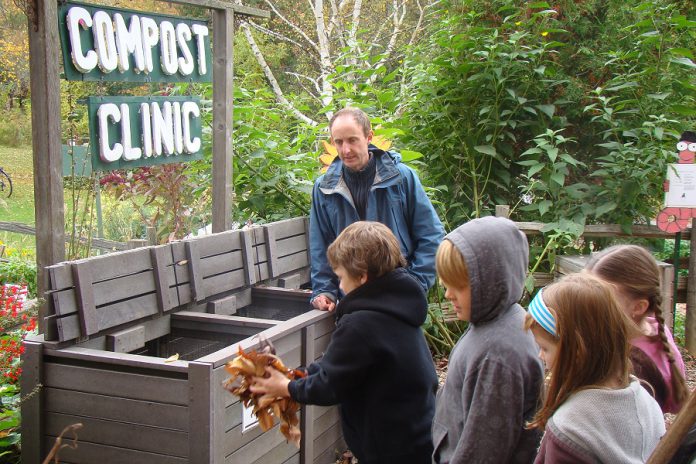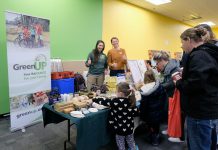
I took advantage of the extended breaks between rain showers over the weekend to do some clean up in the backyard. Withered plant stocks were removed, frostbitten annuals pulled out and soil turned over, ready to be planted in the spring.
As nature prepares to take an extended nap over the colder months ahead, we sometimes think that all the gardening activities we partake in outside also have to come to an end. While this is true for many, composting is not one of them.
Before we can think about putting new plants into the ground next spring, we need to ensure the soil that will be sustaining them is up to the task and composting is an excellent way to do this. Compost breaks up heavy soils and can helps sandy soils hold water. The black gold contains nutrients that are easily used by plants, allowing them to flourish in even the toughest of growing conditions.
Fall is a great time to compost due to the large amount of organic material that remains from the growing season that has just wrapped up. Garden clippings and, of course, leaves make excellent composting material and are readily available.
The first and most obvious tool you’ll need is a composter. These can be obtained from the GreenUP Store. County residents who reside outside the boundaries of city are eligible for special pricing on composters purchased from GreenUP.
Once you have your composter, the next question is “Where do I put it?” Put your composter in a location that is easy for you to access, and positioned so it receives ample sunlight. A well-drained location is preferable. Be sure to plan ahead for the winter if you think you’re going to use it during the cold months. Ask yourself how much shovelling you’re willing to do to access it.
When adding organic material to your compost, think layers. Compost materials can be separated into two types: greens and browns. Greens include kitchen items like peelings and fruit or vegetable scraps and yard waste like grass clippings. Browns can include items like coffee grounds, wood shavings, hay, and leaves.
On the topic of leaves, if you want to compost while we’re in the depths of winter, gathering leaves now is important. Leaves make excellent brown material additions, which are tough to come by in the winter. Bagged leaves can also act as an insulator if placed around your composter to ensure the process does not stop completely.
Items to avoid putting into your composter include meat, fish, bones, fatty foods, and dairy products. These items will eventually break down, but have the potential to cause odours which can attract pests that may disturb your compost. Cat and dog manure, diseased plants, or plants with mature seeds should also be kept out of the composter.
Moisture and air also play important roles in the composting process. There should be just enough water in the compost so that if you pick a handful up and squeeze it, a few drops come out. Turning the compost every few weeks will ensure enough air is reaching the innermost material.
Adding a layer of garden soil now and then can also aid in the break down of material. The composter should be full of microorganisms including bacteria, fungi, and worms to assist in the composting process. Adding soil will ensure these tiny creatures remain present.
It’s important not to rush the composting process. Depending on how the composter is managed, the process can take anywhere from six months to a year to obtain garden-ready compost. If you add large, unchopped or bulky materials, the process can take even longer.
Composting is a great way to not only give our gardens the gift of a rich, nourishing addition to the soil but also reduce our waste. The more we compost, the less waste we send to the landfill — prolonging its life and helping our environment. There’s no better time than the fall season to turn the influx of leaves and other garden material into wonderful black gold for our gardens in the coming spring and summer.


























